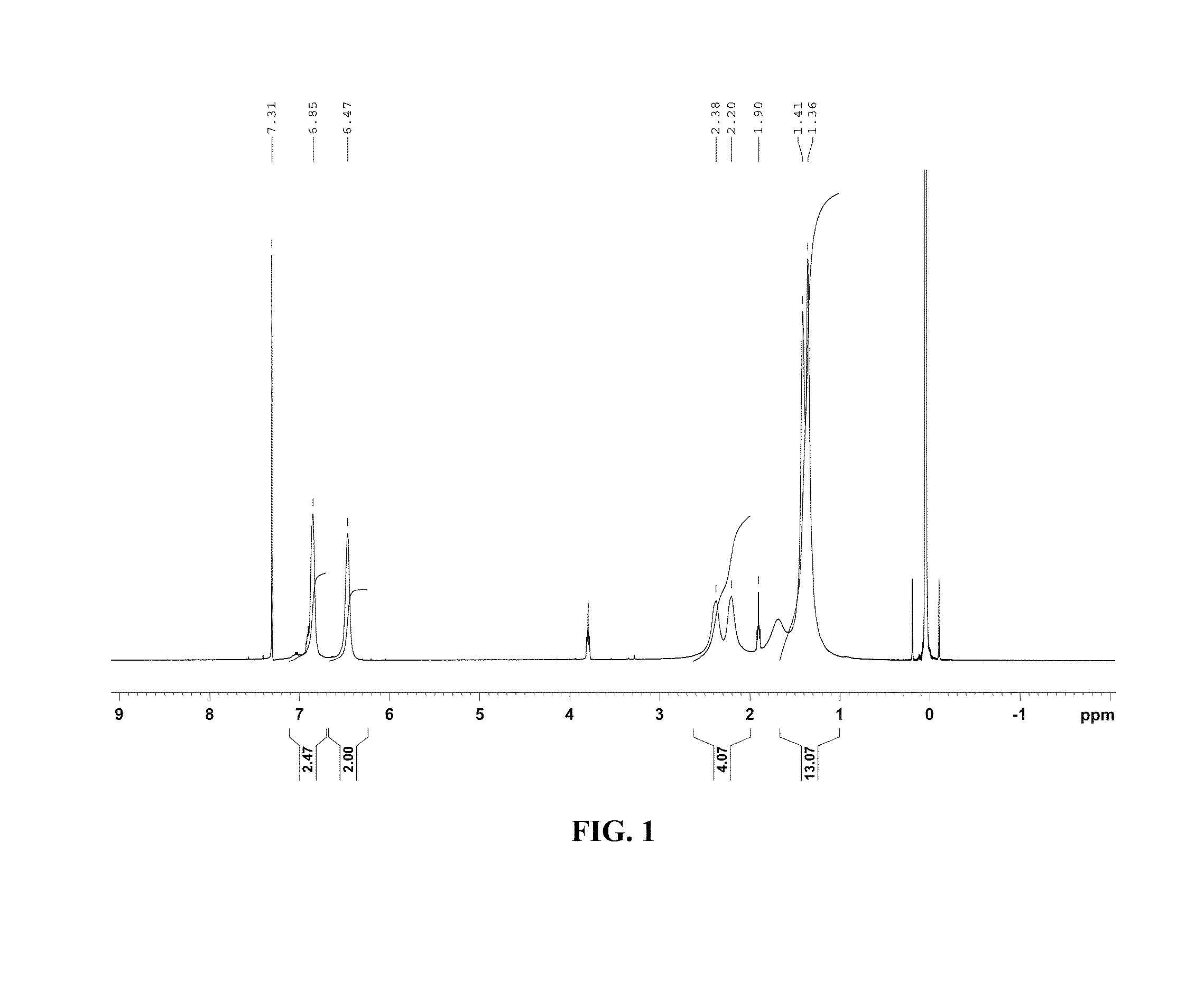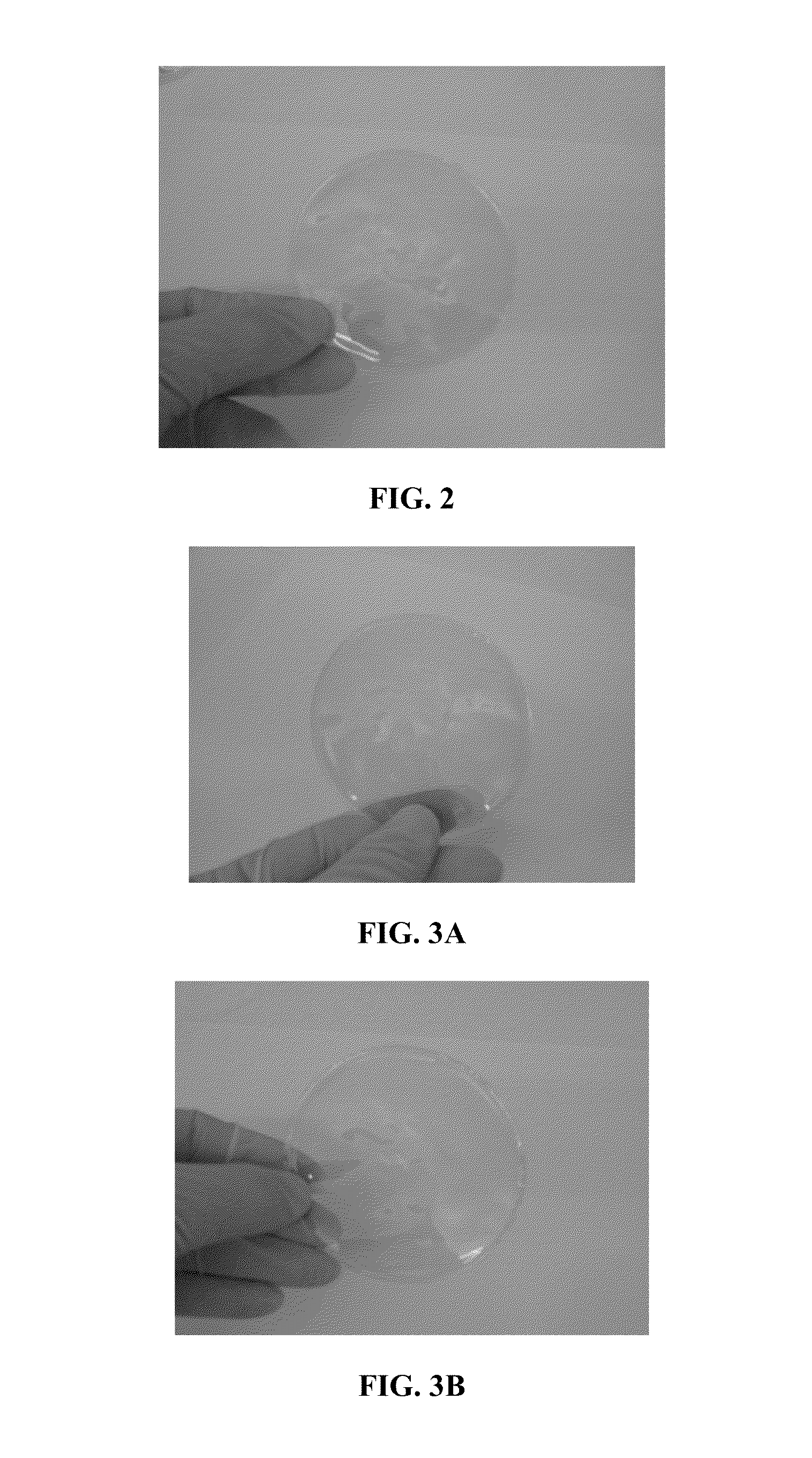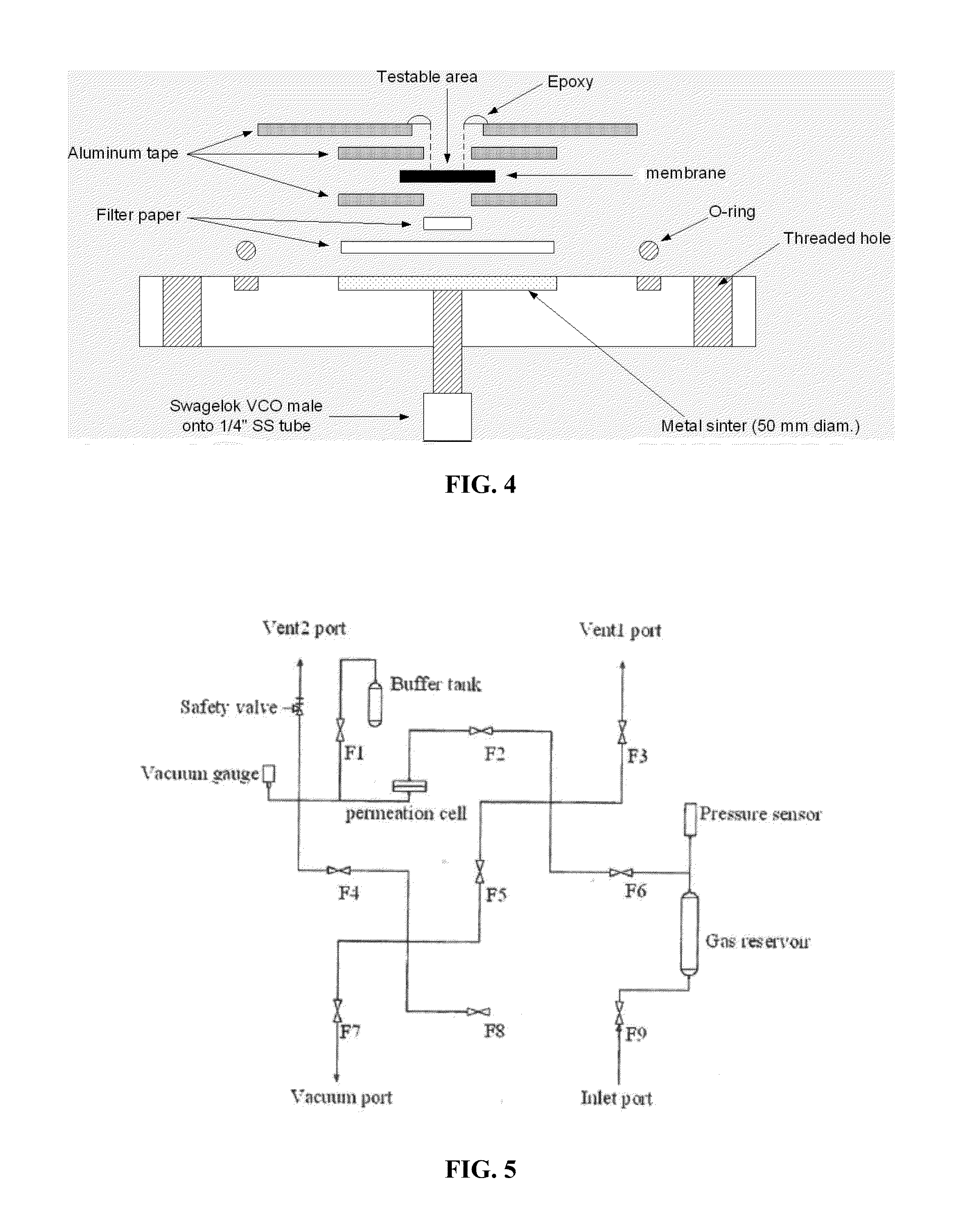Polymeric Membranes
a polymer membrane and membrane technology, applied in the field of polymer membranes, can solve the problems of less efficient and costly use, failure to perform above a given roberson upper bound trade-off curve, and the majority of the polymer membranes that are currently used in the industry, and achieves excellent permeability properties and better selectivity
- Summary
- Abstract
- Description
- Claims
- Application Information
AI Technical Summary
Benefits of technology
Problems solved by technology
Method used
Image
Examples
example 1
Synthesis of PIM-1
[0065]3,3,3′,3′,-tetramethyl-spirobisindan-5,5′6,6′-tetraol (340 mg, 1.00 mmol) and 1,4-dicyanotetrafluorobenzene (200 mg, 1.00 mmol) were dissolved in anhydrous DMAc (2.7 mL), which was stirred at room temperature (i.e., about 20 to 25° C.) for 15 minutes for the totally dissolve of the reagents. Grand K2CO3 (390 mg, 2.5 mmol) was added in one portion, the reaction system was stirred at room temperature for another half an hour before been heated to 150° C. The viscosity increased in the first 10 minutes, toluene (3.0 ml) was added in one portion, and the system was stirred at 150° C. for another 10 minutes. The resulting mixture was poured into methanol / water=1 / 1 solvent, the precipitate was filtered and washed with boiling water for three (3) times, and then dissolved in chloroform and precipitated in methanol. A yellow powder (450 mg, 97.8% yield) was obtained after vacuum drying at 120° C. for 12 hours. Mn 100,000, Mw 200,000, PDI=2.0. Characterization: 1H NMR...
example 2
Membrane Preparation
[0066]A PIM-1, an Extem®, an Ultem®, and four PIM-1 / PEI dense membranes were prepared by a solution casting method. For the PIM-1 / PEI blended membranes, Extem®, Ultem® 1010, Ultem®, and Siltem®, each commercially available from SABIC Innovative Plastics Holding BV, were each used for the PEI component. The PEI component was first dissolved in CH2Cl2 and stirred for 4 hours. Subsequently, PIM-1 from Example 1 was added in the solution and stirred overnight. Each of the membranes were prepared with a total 2 wt % polymer concentration in CH2Cl2. For the PIM-1 / PEI membranes, the blend ratio of PIM-1 to PEI was 90:10 wt % (see Tables 2 and 3 below). The solution was then filtered by 1 μm syringe PTFE filter and transferred into a stainless steel ring supported by a leveled glass plate at room temperature (i.e., about 20 to 25° C.). The polymer membranes were formed after most of the solvent had evaporated after 3 days. The resultant membranes were dried at 80° C. und...
example 3
Masking of Membranes
[0070]The membranes were masked using impermeable aluminum tape (3M 7940, see FIG. 4). Filter paper (Schleicher & Schuell) was placed between the metal sinter (Tridelta Siperm GmbH, Germany) of the permeation cell and the masked membrane to protect the membrane mechanically. A smaller piece of filter paper was placed below the effective permeation area of the membrane, offsetting the difference in height and providing support for the membrane. A wider tape was put on top of the membrane / tape sandwich to prevent gas leaks from feed side to permeate side. Epoxy (Devcon™, 2-component 5-Minute Epoxy) was applied at the interface of the tap and membrane also to prevent leaks. An O-ring sealed the membrane module from the external environment. No inner O-ring (upper cell flange) was used.
PUM
| Property | Measurement | Unit |
|---|---|---|
| temperature | aaaaa | aaaaa |
| pressure | aaaaa | aaaaa |
| temperature | aaaaa | aaaaa |
Abstract
Description
Claims
Application Information
 Login to View More
Login to View More - R&D
- Intellectual Property
- Life Sciences
- Materials
- Tech Scout
- Unparalleled Data Quality
- Higher Quality Content
- 60% Fewer Hallucinations
Browse by: Latest US Patents, China's latest patents, Technical Efficacy Thesaurus, Application Domain, Technology Topic, Popular Technical Reports.
© 2025 PatSnap. All rights reserved.Legal|Privacy policy|Modern Slavery Act Transparency Statement|Sitemap|About US| Contact US: help@patsnap.com



